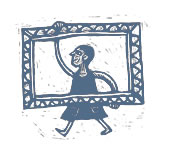Karen had just finished reading Wilding and was recommending it to everyone, saying it was the best book she’d read in ages. It’s the story of an experiment to rewild a West Sussex farm, restoring the land and its wildlife. It’s written by Isabella Tree who, together with her husband Charlie Burrell, is the owner of the Knepp Wildland Project. Dominic said he’d visited Knepp Castle many years ago, so as a surprise, whilst he was away in Spain, we arranged a works outing for when he returned. Continue reading “Knepp”












